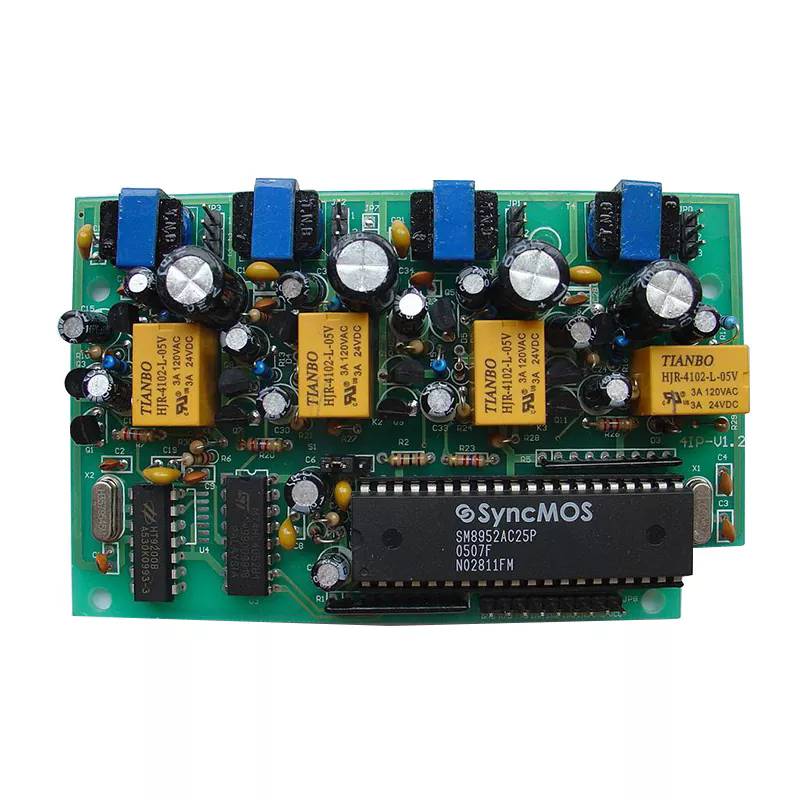The Importance of PCBA Function Testing: Ensuring Reliability in Electronic Manufacturing
2024-08-23
In the world of electronics, ensuring that a printed circuit board assembly (PCBA) functions correctly is critical for the reliability and performance of electronic devices. PCBA function testing is a crucial step in the manufacturing process that verifies the operational integrity of PCBs before they are deployed in end-use products. This blog will explore the significance of PCBA function testing, the methods used, and the benefits it offers to manufacturers and consumers alike.
What is PCBA Function Testing?
PCBA function testing involves evaluating a printed circuit board assembly to ensure it performs its intended functions and meets design specifications. This testing phase occurs after the PCB has been assembled with electronic components and soldered. The primary goal is to identify any functional issues or defects that could affect the performance of the final product.
Why is PCBA Function Testing Important?
1. Quality Assurance: Function testing is essential for confirming that the PCBA meets the quality standards required for reliable operation. It helps identify defects early in the production process, preventing faulty assemblies from reaching consumers.
2. Performance Verification: Ensuring that the PCBA functions as intended verifies that all electronic components work together correctly. This is crucial for maintaining the performance and functionality of the final product.
3. Preventing Failures: Identifying and addressing issues during function testing can prevent potential failures in the field. This reduces the risk of product recalls, customer complaints, and warranty claims.
4. Compliance: Many industries have stringent regulatory and safety standards that electronic products must meet. PCBA function testing helps ensure compliance with these standards, contributing to product safety and reliability.
5. Cost Efficiency: Detecting and resolving issues early in the manufacturing process can save costs associated with rework, repairs, and returns. Function testing helps reduce the overall cost of quality by minimizing defects and improving efficiency.
Methods of PCBA Function Testing
1. In-Circuit Testing (ICT): In-circuit testing involves checking the electrical characteristics of individual components and connections on the PCB. Specialized test fixtures and probes are used to measure voltages, currents, and resistances, identifying faults such as open circuits, short circuits, and component failures.
2. Functional Testing: Functional testing assesses whether the PCBA performs its intended functions. This method simulates real-world operating conditions and verifies that the PCB operates according to its design specifications. It involves applying input signals and observing the output to ensure correct functionality.
3. Boundary Scan Testing: Boundary scan testing, also known as JTAG (Joint Test Action Group) testing, uses a standardized testing method to access and test the internal connections of the PCB. It is particularly useful for detecting faults in high-density and complex PCBs where traditional testing methods may be challenging.
4. Automated Optical Inspection (AOI): AOI uses cameras and image processing algorithms to inspect the physical appearance of the PCBA. It detects issues such as soldering defects, component misalignment, and other visual anomalies that could affect functionality.
5. Burn-In Testing: Burn-in testing involves operating the PCBA under elevated temperatures and voltages for an extended period to identify early-life failures. This stress test helps ensure the reliability and durability of the PCB under extreme conditions.
6. Environmental Testing: Environmental testing evaluates the PCBA’s performance under various environmental conditions, such as temperature extremes, humidity, and vibration. This testing helps ensure that the PCB can withstand the conditions it will encounter in real-world applications.
7. Functional Verification with Test Fixtures: Test fixtures are custom-built tools that interface with the PCBA to test its functionality. They provide a controlled environment to simulate the operational conditions and monitor the performance of the PCB.
Benefits of PCBA Function Testing
1. Enhanced Reliability: Function testing ensures that the PCBA operates reliably, reducing the likelihood of failures and improving the overall quality of the end product.
2. Improved Product Performance: Verifying that the PCBA performs its intended functions helps maintain the performance standards of the final product, leading to better customer satisfaction.
3. Early Detection of Defects: Function testing identifies defects early in the manufacturing process, allowing for timely corrections and reducing the risk of defects reaching the consumer.
4. Reduced Production Costs: By catching issues early, function testing minimizes the need for rework, repairs, and returns, leading to cost savings and more efficient production processes.
5. Compliance with Standards: Function testing helps ensure that the PCBA meets regulatory and industry standards, contributing to product safety and compliance.
6. Increased Customer Confidence: High-quality, reliable products enhance customer confidence and trust in the brand, leading to positive reviews and repeat business.
Best Practices for PCBA Function Testing
1. Develop a Comprehensive Test Plan: Create a detailed test plan that outlines the testing methods, criteria, and procedures. This plan should cover all aspects of the PCBA’s functionality and performance.
2. Utilize Automated Testing: Implement automated testing solutions to increase efficiency and accuracy. Automated systems can quickly and consistently perform repetitive tests, reducing human error.
3. Regularly Update Test Procedures: As PCB designs and technologies evolve, update test procedures to address new challenges and ensure that testing remains effective.
4. Train Test Personnel: Ensure that personnel involved in PCBA function testing are well-trained and familiar with the testing equipment and procedures. Proper training contributes to accurate and reliable test results.
5. Perform Data Analysis: Analyze test data to identify trends, recurring issues, and areas for improvement. Data analysis helps in refining testing processes and enhancing overall quality.
6. Maintain Testing Equipment: Regularly calibrate and maintain testing equipment to ensure accurate and reliable performance. Well-maintained equipment contributes to consistent test results.
Conclusion
PCBA function testing is a critical step in the electronic manufacturing process that ensures the reliability, performance, and quality of printed circuit board assemblies. By utilizing various testing methods and best practices, manufacturers can identify and address issues early, leading to higher-quality products and greater customer satisfaction. As technology continues to advance, function testing will remain a vital component of ensuring that electronic devices meet the highest standards of performance and reliability.



